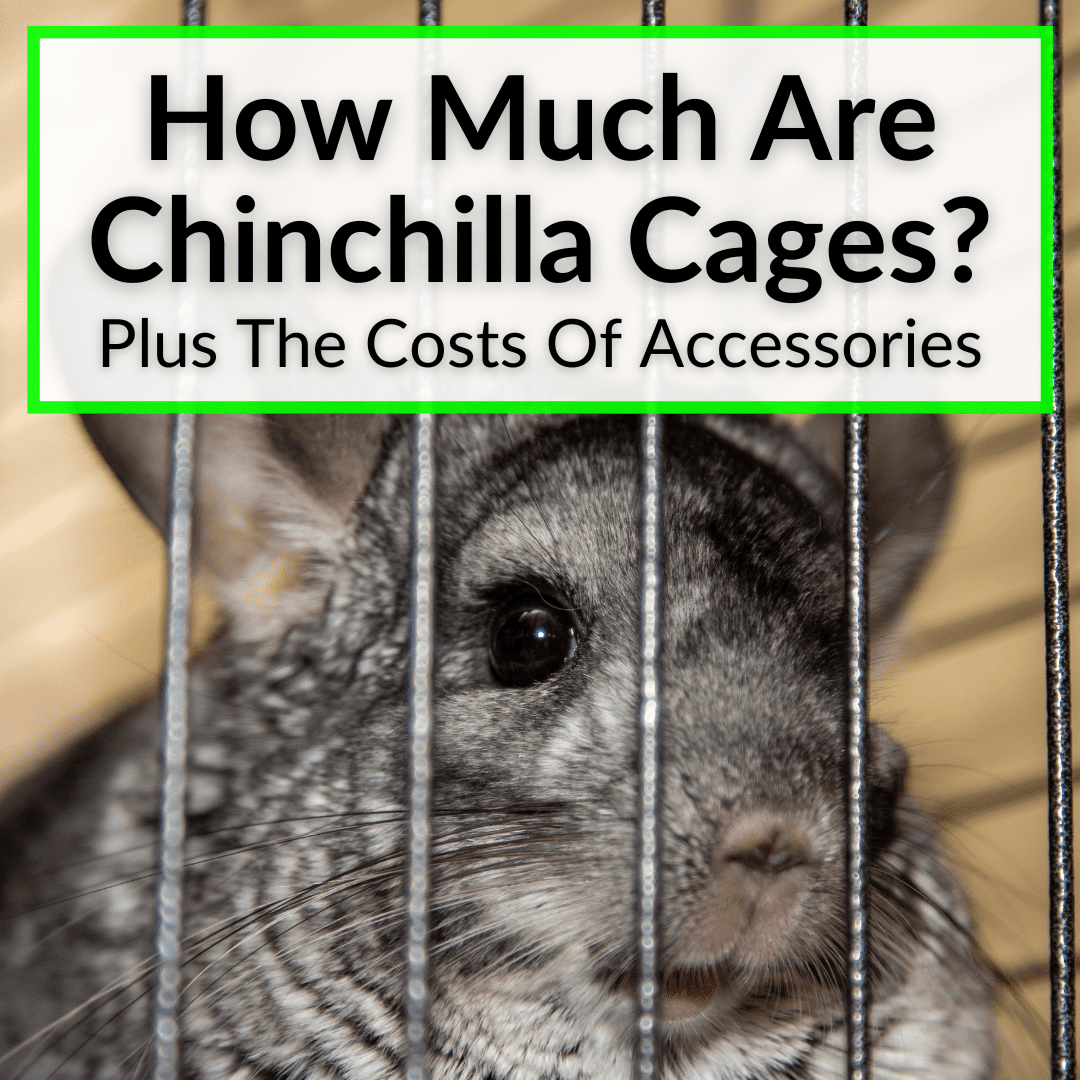
You may have also heard that they are cheap pets.
In fact, you may have read the latter on this site.
Chinchillas are actually quite inexpensive when compared to many common pets.
But for some reason, they have a reputation among some for being expensive.
Maybe it’s their endangered status. Or maybe it it the cost of their cages.
How much are chinchilla cages?
Good ones are pretty expensive. But it is the only truly expensive thing you need to buy, if you want to keep a chinchilla as a pet. And the ongoing cost of care is incredibly low.
Keep reading to learn exactly how much you can expect to pay for a quality cage, and for a budget cage. We will also cover the average prices of the cage accessories you will need to provide your pet.
Contents
How Much Are Chinchilla Cages?
Chinchilla cages made of chew-proof metal can cost anywhere between $50 and $200. Small-sized cages up to 1 to 2 tiers cost less, whereas cages with 3 tiers or more, lockable wheels, ladders, slides, perches, and secure door locks could cost over $200.
The best chinchilla cage on the market currently is the Critter Nation 2. It usually sells for around $350. It is the cage I use and you can read my review here.
There are some good alternatives that sacrifice a few features, but also cost a bit less. This article compares the best cage to the top alternatives.
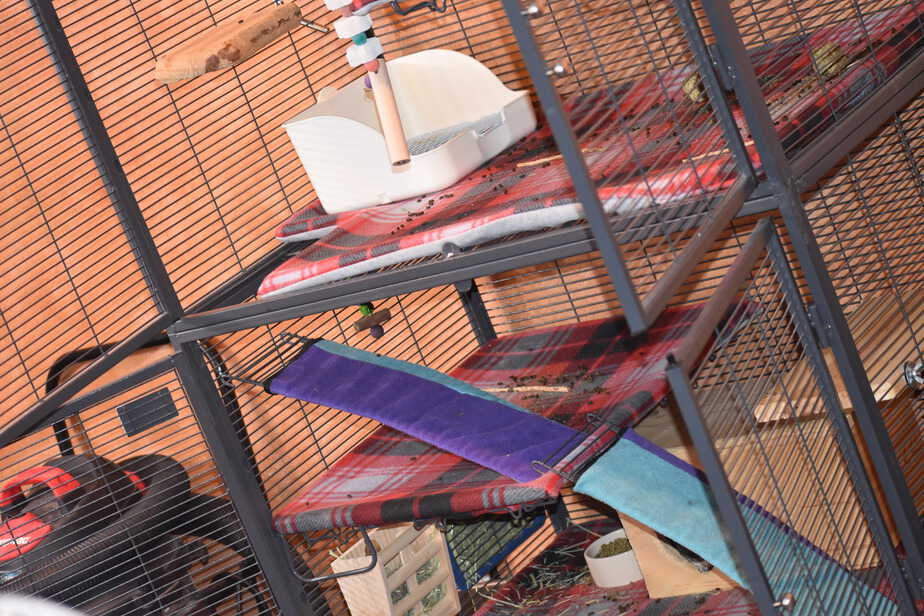
Portable cages to transport your chinchilla to the vet or for other trips cost far less. Even the best chinchilla travel cage on the market costs under $30.
Cage accessories for chinchillas can range from a few dollars to well over $100, although most are under $30. It is mainly a good running wheel that costs above $100.
Do you need a wheel for your chinchilla? It is not an absolute necessity, but strongly recommended. Wheels give chinchillas a chance to exercise, destress, and just have fun.
Let’s take a closer look at the price you can expect to pay for a chinchilla cage and what factors affect the price. Below, we will look at the costs of the most important and most common cage accessories.
Factors That Affect The Cage Cost
High-quality chinchilla cages can cost between $250 and $400, but you can get some affordable cages in the range of $50 to $75. It definitely pays to spend a bit more and get the best, though.
If you are considering a chinchilla as a pet, you should expect to spend around $350 on the cage and budget accordingly. But if that absolutely is not doable, it helps to know which factors affect chinchilla cage prices, so you know where you can save.
Material
High-quality cages are made with sturdy metal frames, using wire with a 0.125 inch to 0.165 inch diameter. The best are coated in a non-toxic paint to make them wear and corrosion-resistant.
Good cages are also chew-proof. That is important, because chinchillas will bite their cage bars.
All of these features increase the price of the chinchilla cage. Cheaper cages can have materials that are easy to chew through and they can even contain harmful plastics.
Number Of Levels
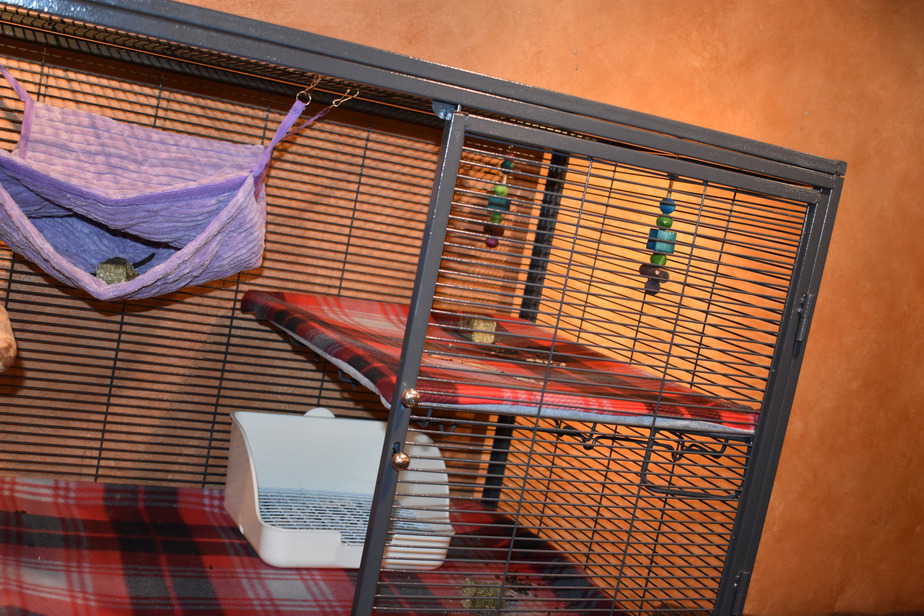
Small cages with only one or two tiers can sell for as low as $50, whereas those with 3 or 4 tiers can cost well over $300. It is always better to have a spacious cage, since chinchillas tend to get depressed in tiny cages, due to a lack of movement. These animals love to jump and climb and very much appreciate having many levels.
User-Friendly Design
Apart from being comfortable, safe, and spacious for your chinchilla, good cages feature a user-friendly design, often including multiple openings. This makes it easy to access the inside of the cage to clean it.
Other features like a removable tray and large under-the-cage removable stand or storage for keeping your pet’s food packets all increase the cage’s price significantly.
Portability
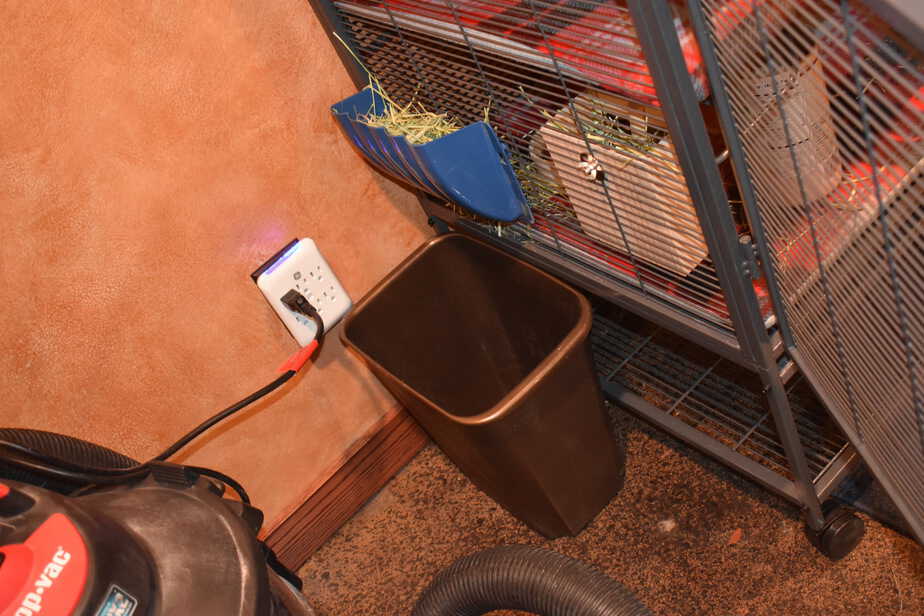
4 easy-rolling wheels or casters tend to increase the price of the cage. Some cages also have lockable wheels with brakes to prevent the cage from rolling, once you have placed it in its permanent location inside your home.
Inner Features
High-quality cages come with multiple ramps, trays, platforms, ladders, and perches for your pets to climb and run. These keep your chinchilla active.
Such features are possible only in multi-level or multi-tiered cages. Some cage manufacturers also provide covers for the perches and platforms to protect your chinchilla’s delicate paws. This increases the cage’s price.
Cost Of Chinchilla Cage Accessories
Next, we will take a look at the costs you can expect to incur to provide your chinchillas with the necessary cage accessories. The following are all things you should include in the cage for your pet to have a happy and healthy life (and this article lists the best products).
Wooden Platforms
These encourage your chinchilla to climb and also promote sports, improve activity levels, help develop coordination and balance, and maintain your pet’s health.
Good-quality, edible wood platforms cost around $15 for 4 to 5 pieces of different shapes. You can easily affix them in the cage at different levels.
Toys
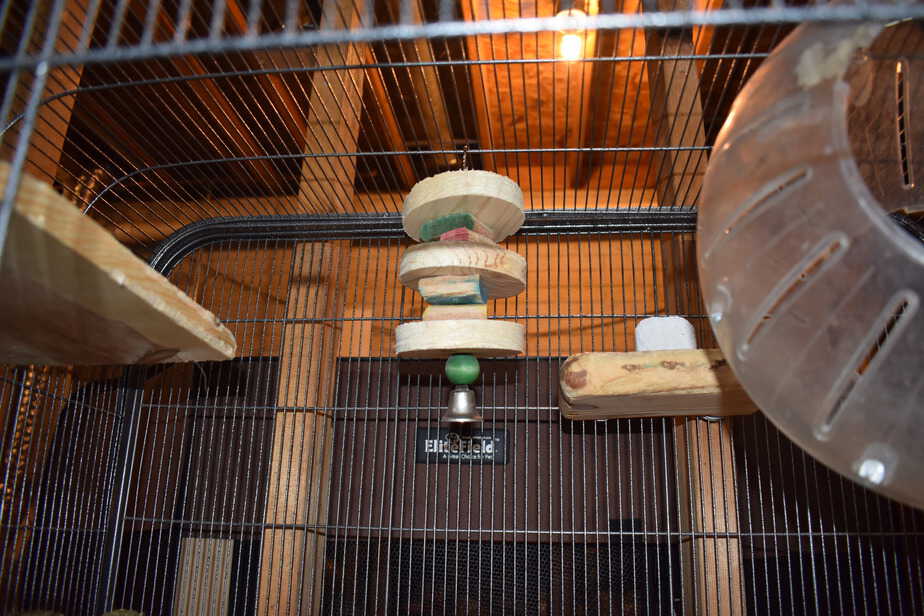
Chinchillas also need wooden chew toys to keep their teeth clean and wear down those ever-growing chompers. Natural apple wood toys in different shapes can keep your chinchilla happy. They cost around $17 to $20 for 10 to 12 pieces.
Water Bottle
Your chinchilla needs a constant supply of fresh, clean water. The easiest way to provide this is by attaching one of these types of water bottles to the cage. Good ones cost $40 to $50.
Hay Feeder
Chinchillas also need a constant supply of hay. You can attach a hay feeder to the cage and keep it stocked at all times. This article covers the best hays and hay feeders. Good hay feeders generally cost $10 to $15.
Food Bowl
In addition to a constant supply of hay, pet chinchillas should also get meals of commercial food pellets. These include all of the nutrition they need. The easiest way to serve them is in a food bowl. You can get a good one for undr $10.
Tunnels And Hides
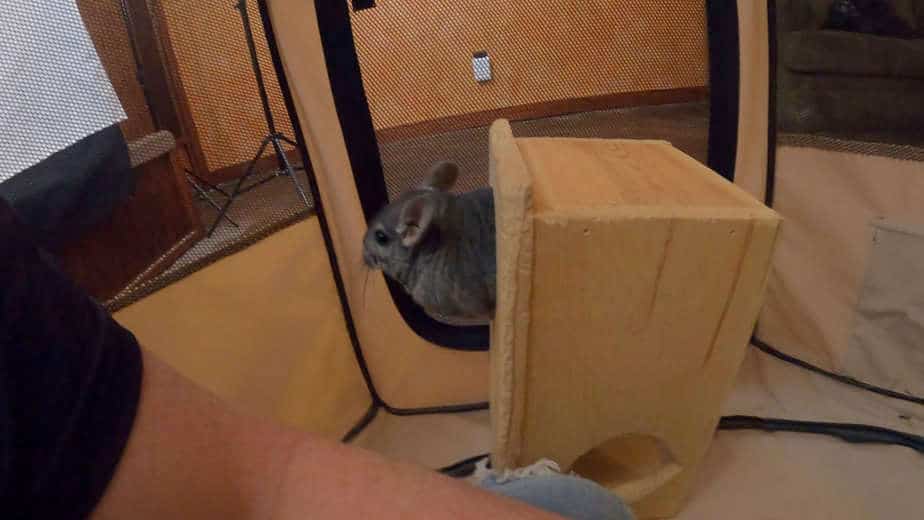
Chinchillas need places to hide out. It helps them feel safe and secure. Without places to hide, they will become stressed and probably fall ill. Nest boxes and tunnels are ideal for this.
This article lists the best nest boxes for chinchillas. You can expect to pay $10 to $15 for good tunnels and $20 to $30 for a good nest box, but you can also make your own. Just make sure to use safe materials.
Optional Accessories
That covers the items your chinchilla needs to have in its cage. But there are also some things I strongly recommend, but that aren’t an absolute necessity. You chinchilla will very much appreciate them, though.
Running Wheel
Running wheels encourage your chin to run and that keeps them mentally and physically fit. The wheel should be at least 15 inches in diameter and have solid flooring.
Aluminum alloy wheels can cost $120 to $150 but cheaper non-slip, chew-proof wooden wheels cost around $20. Unfortunately, the cheaper ones are not very good. This article covers the wheel I recommend and use for my chinchilla, along with a few alternatives.
Litter Pan
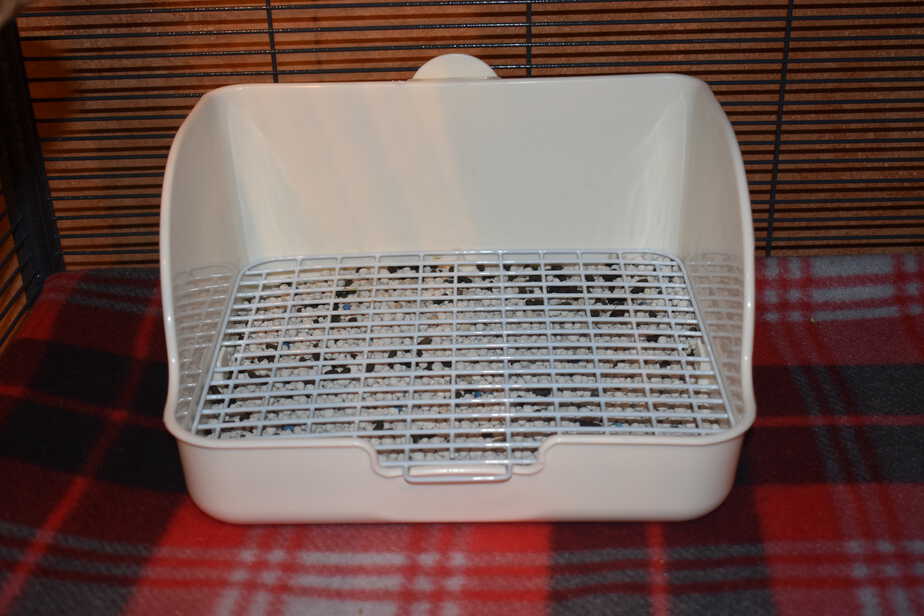
If you plan on potty training your chinchilla, you will need a litter box. If not, don’t worry about it. These tend to cost around $20. This article covers litter boxes and potty training chinchillas.
Fleece Liners
Fleece liners make cage cleaning much easier. They are also much gentler on your pet’s feet. They can cost around $80, depending on your cage. But they actually save you money in the long run. This article covers why fleece liners are great and how they save you money.
Hammock
Hammocks are a bit of a hit or miss. Some chinchillas love them and some have no interest. My chinchilla uses her hammock occasionally, but not regularly. This article covers the best hammocks for chinchillas. They all cost between $10 and $20.
What Kind Of Cage Is Best For Chinchillas?
I already mentioned the Critter Nation 2 cage above. It is easily the best optio on the market when you take price into account and it is the one I use now (after having tried several). But it is not cheap.
If you want to do your own comparison shopping, here are some features to consider when selecting your chinchilla’s cage.
Optimal Size
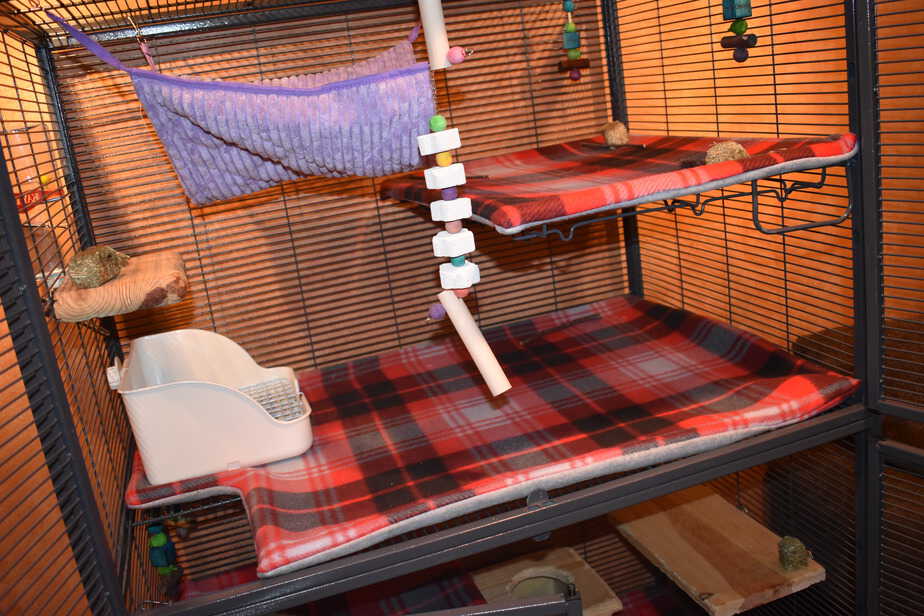
A single chinchilla needs a cage of at least 4 x 4 x 3 feet. Good cages have 0.5 to 0.95-inch spacing between the wires to prevent chinchillas from getting stuck.
The roomier the cage, the better it is for your pet. Chins are agile, active animals. Therefore, they also need vertical space in the cage to climb and jump. This article covers ideal cage sizes for chinchillas.
How Much Space Do Two Chinchillas Need?
As mentioned, a single chinchilla needs a cage measuring at least 4 by 4 by 3 feet. The cage should have multiple tiers, or levels, to encourage your pet to climb.
Two chinchillas will need double the space. One reason I love the Critter Nation 2 cage is that it already has enough space for a second chinchilla and you can turn it into two separate cages, if you ever need to separate your chins.
Right Material
Avoid using plastic or wooden cages which your chinchilla can easily chew through. Also, avoid galvanized or zinc cages, because those materials are toxic to these animals. The metal cage you choose for your chinchilla should have non-toxic paint (or no paint) which won’t harm your pet.
Proper Floor
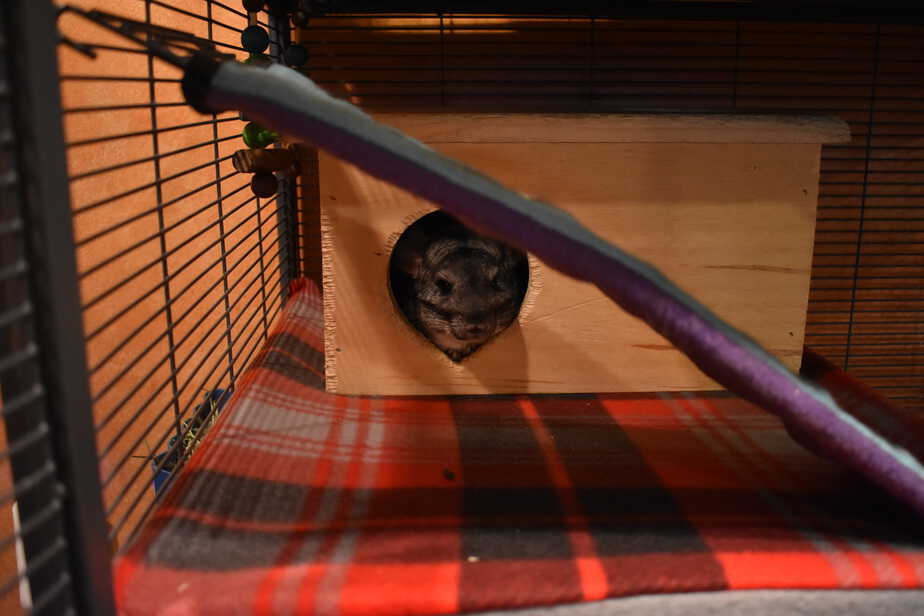
Chins have delicate paws and can develop sores and infections such as pododermatitis, if the cage wire flooring is abrasive. You should cover at least a part of a wire cage floor with plexiglass or add a non-treated wooden plank or safe fleece bedding to keep your pet’s paws safe.
Are Chinchillas Supposed To Be In Cages?
You can keep chinchillas in cages, as long as you meet all their needs. In fact, captive chinchillas live longer than wild chinchillas and they also grow bigger and are usually healthier.
At the same time, you must not forget that chins also need to spend some time in the open. You must let your pet out of the cage daily for supervised playtime in a safe chinchilla-proofed room or a playten like these.
Ideally, you should let chinchillas out to play for at least 1 hour daily (preferably around dusk when they are most active). Please take the following precautions when you let your chinchilla out of its cage:
- Block all escape points.
- Keep electrical cords out of your pet’s reach (or cover them) and cover all electrical sockets.
- Keep dogs and cats away from the area. Ensure no predators can swoop down from above to frighten or harm your chinchilla.
- Keep all chewable items out of your chin’s reach.
- Ensure that the floors are not abrasive and there are no sharp objects that could hurt your pet’s delicate paws.
- Keep the temperature between 60° and 74° F (16° to 23° C).
Are Chinchillas Low Or High Maintenance?
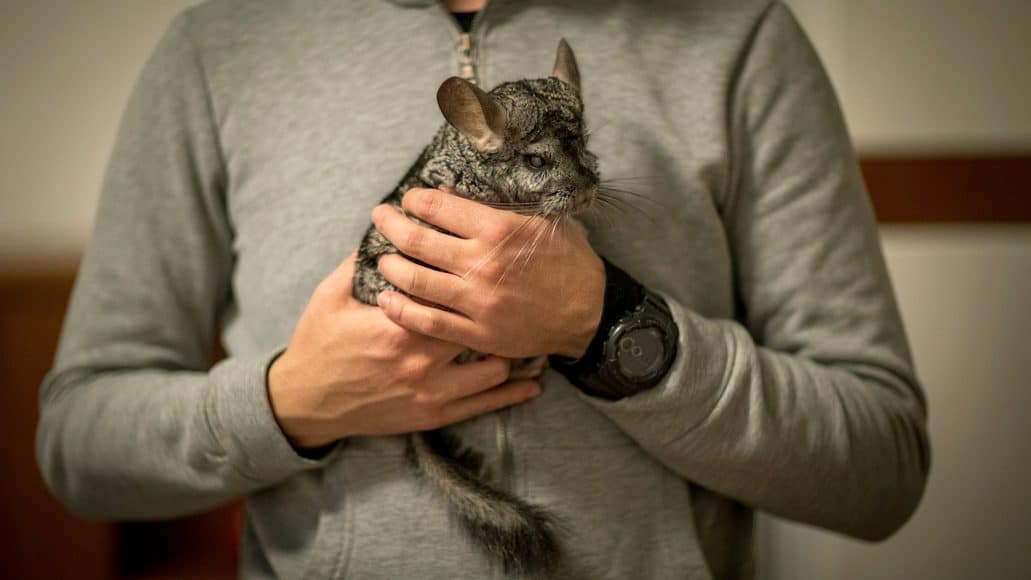
Chins are lovable and affectionate animals. They make excellent pets, because they are intelligent, learn quickly, and are also cute to look at.
Chinchillas do not require as much grooming as cats and dogs. Other than providing them with their weekly dust baths, they don’t need you to brush or bathe them.
They also do not require two or three walks per day (but they do need to be let out of their cages for supervised playtime at least once a day).
You also need to provide them with food constantly. Their cages also need weekly cleaning and monthly deep cleaning.
In general, most chinchilla owners will agree that chinchillas are moderately easy to raise. Also, they make highly rewarding pets and may even provide stress relief. Considering all this, chinchillas are worth the effort you have to put in while keeping them.
How Much Does A Chinchilla Cage Cost: Final Thoughts
Chinchilla cages are quite expensive, if you plan to get a quality one that provides plenty of space for your pet to run, climb and jump. Which is what you should do.
Luckily, the cage is to only major expense involved in owning a chinchilla. The cage accessories you need add another $100 to $200. But these are all one-time expenses.
In other words, you have a large upfront cost (though still smaller than for many pets) and then a very low ongoing cost. If you use fleece liners instead of wood shavings, the ongoing costs is even lower.
Leave a Reply